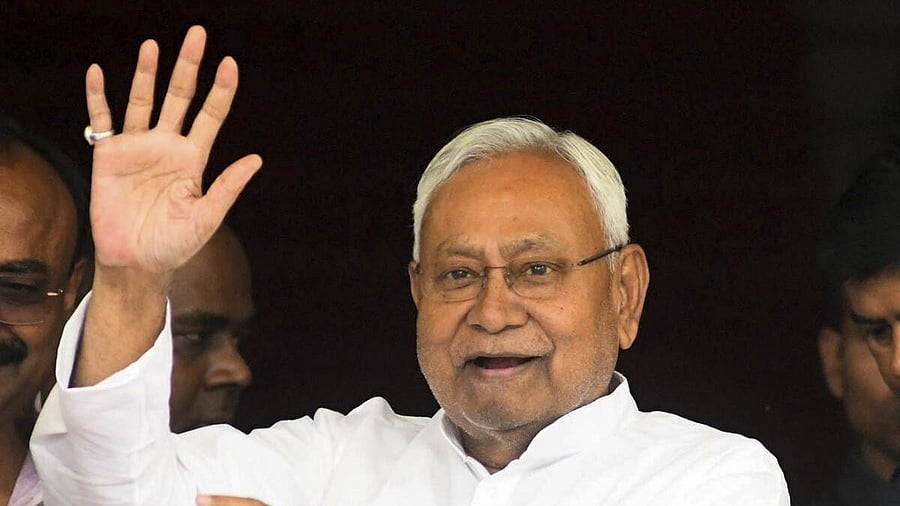
Bihar CM Nitish Kumar
Credit: PTI photo
With more than half the day still remaining, it is quite clear who is going to have the last laugh when the vote counting for the 2025 Bihar assembly elections are done. It is none other than a man, who has more or less cemented his place as a dominant political force in the state over the past two decades - Nitish Kumar.
As of 12.30 pm, when this article is being written, the ruling NDA-led by Nitish is leading in 192 of the 243 seats, with JD(U) leading in 78 of those seats.
This is not any storm that erupted recently. This is a wave that has been building over years
Party insiders say Nitish worked “quietly, under the radar,” but the response on the ground showed voters were ready to “make noise through their votes”, as JD(U)’s Sanjay Kumar Jha put it. JD(U) spokesperson Neeraj Kumar said the wave reflected an inclusive model that moved beyond identity politics, especially with women turning out in “such large numbers”.
Here are the five key factors that explain Nitish Kumar’s comeback:
1. The ‘good governance’ image
Despite political somersaults, Nitish has managed to build a brand as “Sushasan Babu” (good governance man) because of the effort his government put into restoring law and order, tackling crime and developing the administrative system of the state. This caught the attention of many voters, particularly the elderly population.
2. Welfare schemes and support of women voters
Welfare schemes such as providing free bicycles and uniforms for girls, incentives for school attendance, livelihood programmes through women's SHGs ensured that the JD(U) built a strong support base among women over the years. As JD(U)’s Neeraj Kumar pointed out, the scale of women’s turnout “tells the entire story of the turnaround.”
3. Managing political alliances
Nitish Kumar’s greatest asset has been how practical he has been with regard to forging and abandoning alliances. He has moved from the BJP to the RJD-led Mahagathbandhan and back to the BJP again, with each shift timed to the changing political winds in Bihar. This flexibility has allowed him to remain relevant, recalibrate his positioning, and survive electoral setbacks that would have ended most careers.
4. Dealing with caste equations
Nitish’s endurance comes from his intuitive grasp of Bihar’s complex caste arithmetic. From the historic Kurmi–Koeri–Yadav alignments to the modern OBC–EBC–upper-caste equation that underpins his current support, he has consistently repositioned himself according to the the state’s evolving social coalitions.
5. Successful in promoting the 'jungle raj' narrative
The RJD’s campaign remained stuck in familiar identity-driven rhetoric, while JD(U) sensed a shift towards an aspirational voter base. “The mindset of the people has changed, but the Opposition kept treating them the old way,” JD(U)’s Sanjay Kumar Jha was reported to have said according to a report by Hindustan Times.
And to top it all, JD(U)'s plan of branding RJD's period of reign as the 'jungle raj' era did have an impact on the minds of the voters.
